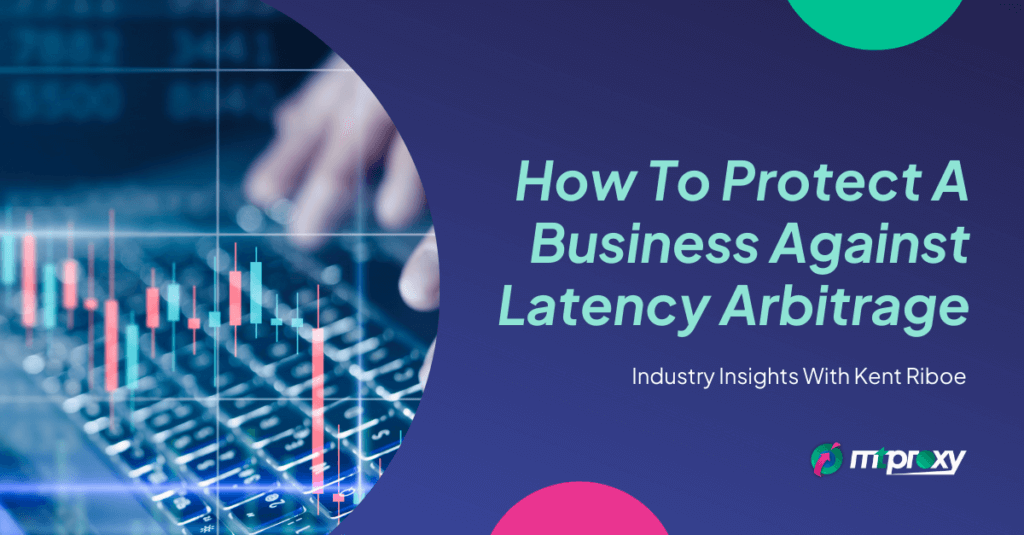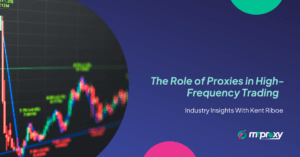Latency determines how quickly traders can receive market data, how easily they can place orders, and how likely they are to get the price they want. And yet, not all traders want low latency trading. Why? Because of a practice known as latency arbitrage.
What Is Latency Arbitrage?
Latency arbitrage is when traders try to take advantage of market and data transfer inefficiencies to make a profit. For some traders, latency arbitrage often involves using high-frequency trading strategies. Traders use advanced trading software and custom-built algorithms to trade. They use the algorithms to analyse the markets and then automatically place trades based on a predetermined set of rules. This enables them to place a high volume of trades at a very fast speed.
For these traders, the goal is often to trade as much and as quickly as possible. The idea is also to try to be a split second ahead of everyone else in the market. High-frequency traders often rent or purchase expensive hardware in major trading hubs to achieve this. By reducing the distance between their servers and the exchanges, they reduce the amount of time it takes to send and receive data. This often means they have better access to market information than most traders and can execute trades much more quickly than other market participants.
High-frequency traders sometimes attempt to use more predatory trading tactics such as network flooding, quote stuffing, and spoofing to carry out latency arbitrage. These tactics allow high-frequency traders to slow down trading for other traders. This is bad for the traders who experience an increase in slippage due to the increase in latency. It is also bad for brokers who experience lower customer satisfaction levels due to the slower trading.
For some traders, latency arbitrage often involves trading the same instruments with two different brokers and trying to take advantage of the price difference. They choose two brokers based on their latency and price streaming. They then use the faster broker for price streaming and the slower broker for trading. Their goal is to determine which way the price is going and then increase their profit by taking advantage of latency inefficiencies and price differences.
How Does Latency Arbitrage Affect Brokers?
Latency arbitrage can cause serious issues for brokers. Most brokers do not have the kind of trading infrastructure needed to deal with latency arbitrage strategies. This is because most of the strategies involve sending large volumes of data quickly. The sudden surge in trading activity takes up a lot of server resources. More often than not, the high-frequency traders succeed in overwhelming the server network. This means the arbitrage traders can front-run other orders and make a profit.
What Brokers Can Do To Reduce The Impact of Latency Arbitrage
It is very difficult to stop traders from carrying out latency arbitrage. The best thing a broker can do is reduce the overall latency in their network. This is because if a broker increases their overall data transmission speed, then there will be less opportunities for traders to try to take advantage of any data transfer inefficiencies. There are three main ways brokers can do this.
1 – Limit server exposure
Latency arbitrage can put a lot of pressure on trading servers. By adding proxy servers to their network, brokers can limit the negative effects of latency arbitrage on both their business and their other clients. Suppose a trader tries to use predatory trading tactics, such as quote stuffing. In that case, the trader will only slow down trading on one proxy server. This will help brokers protect their main trading servers and the rest of the proxy network from increased latency. It will also help them offer a better trading experience to other clients who, thanks to the larger proxy network, will continue trading as normal.
2 – Reduce overall latency
Many brokers believe the best way to reduce latency is to be close to exchange servers. However, the most effective way to reduce latency is to be close to clients. By setting up proxy servers in key locations, brokers can reduce the distance and the latency between their server and their clients’ trading platforms. This will help brokers speed up trading for their clients worldwide. It will also help them become one the fastest brokers on the market and make them less vulnerable to arbitrage trading.
3 – Offer better price streaming
Many brokers are only using their main trading servers to send clients price data. This takes up a lot of server resources. By adding proxy servers to their network, brokers can store price data closer to their clients. This will help them to reduce the load on the main servers. It will also help them offer better, faster access to price data and make latency arbitrage strategies harder to implement.
About MT Proxy
MT Proxy provides robust, custom-built proxy server solutions. We specialise in helping brokers speed up data transmission between their main servers and their clients. Brokers can reduce overall client-side latency by up to 40% with our services. This helps them to offer their clients better access to market data, more consistent price streaming, and of course, faster trading. It also helps them to protect their business against latency arbitrage and other external threats to their server network. To find out more, sign up for our free trial.



